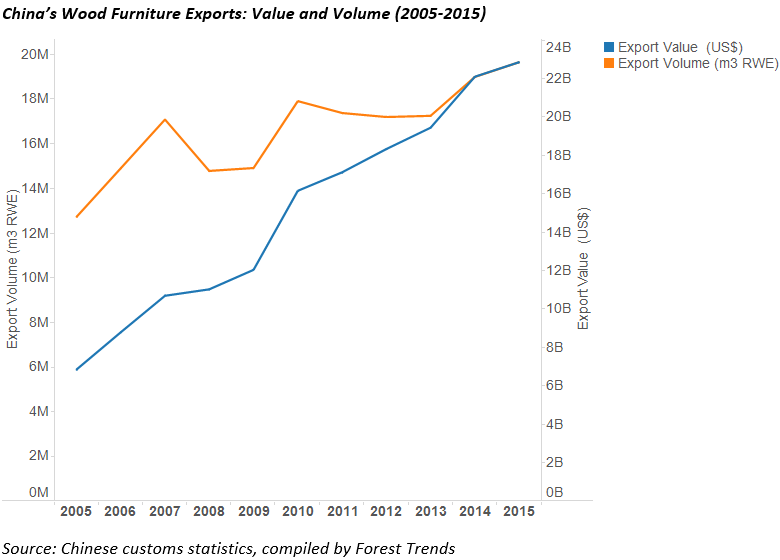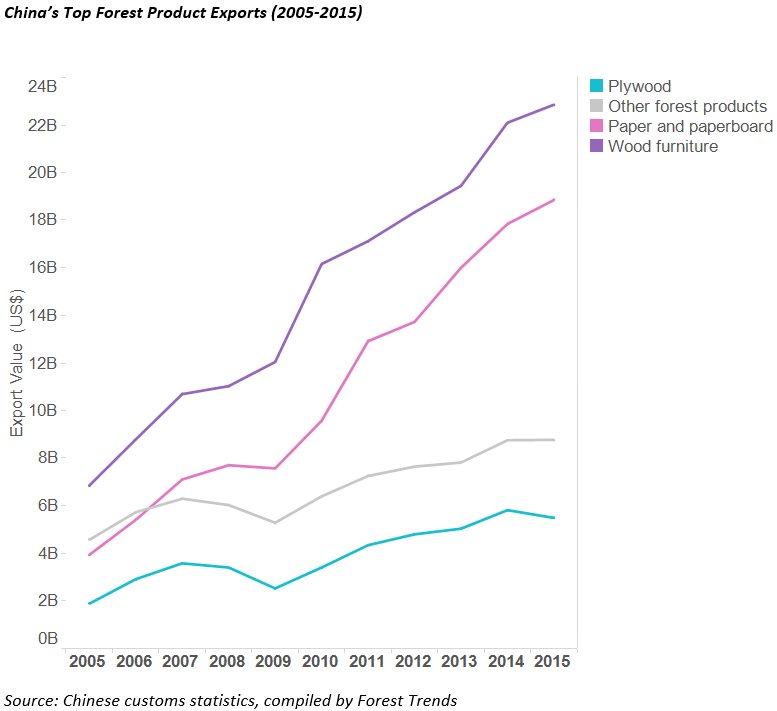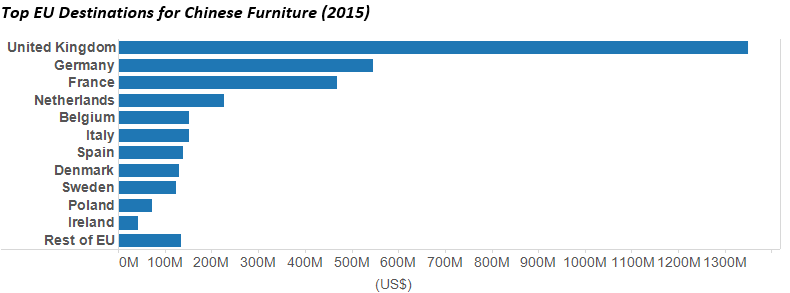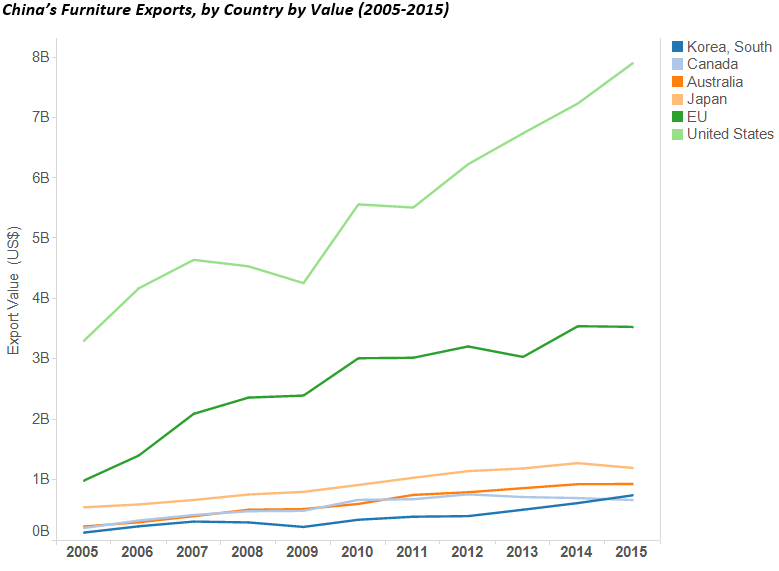By value, nearly 83 percent of Chinese furniture exports are shipped to the US, EU, and Australia — three markets that are actively regulating the trade in illegal timber. According to a March 2016 Forest Trends survey covering enforcement activities during the previous six months, government regulatory agencies in 14 EU Member States and Australia issued 61 Corrective Action Requirements and sanctions to companies that had not conducted proper Due Diligence on their furniture supply chains. Data suggests that a significant portion of these actions were related to furniture imported from China.
Despite news around China’s trade slump, the country’s export-oriented wood furniture sector is alive and kicking. Known for over a decade as the “wood workshop of the world,” China continues to rank as the world’s leading manufacturer and exporter of wooden furniture, capturing about 40% of a US$ 57 billion global market.
According to Chinese customs statistics, both the volume and value of China’s wood furniture exports reached an all-time high in 2015, worth an estimated US$ 23 billion. This is more than double the value reported in 2008 and up 3.4% from the previous year. Of particular note is how China’s furniture exports are gradually becoming higher priced, as evidenced by the ratio of volume to value.
By value, wooden furniture consistently represents the most significant product segment of all of China’s forest product exports. In 2015, about 40% of China’s total forest product exports consisted of wood furniture, followed by paper (34%) and plywood (10%). Export values of wood furniture and paper have grown faster than any other forest product.
Who Is Buying Chinese Furniture?
The vast majority of Chinese furniture exports—nearly 83 percent by value—are shipped to markets in the US (53 percent), EU (24 percent), and Australia (6 percent). These three markets are unique in the global wood trade in that they were the first jurisdictions to ban the import of illegal timber and wood products through the enactment of the US Lacey Act Amendment, EU Timber Regulation (EUTR), and Australian Illegal Logging Prohibition Act (ILPA). In order to comply with these timber regulations, companies importing wood products into the US, EU, and Australia are required to conduct Due Diligence or due care to ensure the goods they are trading in are not associated with illegal logging.
Compared to less processed products like logs and lumber, the supply chains for wood furniture are considered more challenging to trace back to the forest. This is due in part to the multiple stages of manufacturing involved as well as the trend toward combining numerous wood sources and composite materials into any given furniture item.
Recent Forest Trends research suggests that the enforcement of the US Lacey Act, EUTR, and Australian ILPA is on the increase and will likely start affecting the furniture sector for manufacturers exporting to the US, EU, and Australia. A March 2016 Forest Trends survey of government regulatory agencies in 14 EU Member States and Australia indicates that during the previous six months, authorities issued 46 Corrective Action Requirements and 15 sanctions to companies selling furniture in these markets. Data suggests that a significant portion of these corrective actions were related to furniture imported from China.
Furthermore, a March 2016 press release from the EUTR Competent Authority in the Netherlands notes that the focus of their upcoming enforcement actions “will be placed on companies importing wooden furniture from China, India and Vietnam.” The Netherlands is one of the top EU destinations for Chinese furniture, ranking fourth after the UK, Germany, and France.
Apart from the US, EU, and Australia, other top destinations for Chinese furniture include Japan, South Korea, and Canada—three jurisdictions that are deliberating increased timber import controls to combat the global trade in illegal timber.
Viewpoints showcases expert analysis and commentary from the Forest Trends team.
Connect with us on Facebook and Twitter to follow our latest work.





